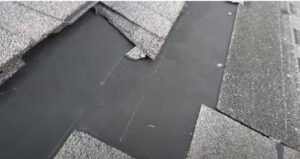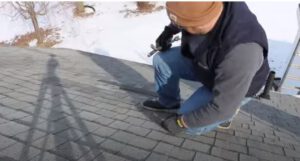 The roof of a home serves as the first line of defense against the elements. A damaged shingle roof can compromise this protection, leading to leaks, heat loss, and other issues. While major damage requires professional attention, minor damage to a shingle roof can be repaired by homeowners themselves. Here’s a step-by-step guide to help you repair a damaged shingle roof on your Australian home.
The roof of a home serves as the first line of defense against the elements. A damaged shingle roof can compromise this protection, leading to leaks, heat loss, and other issues. While major damage requires professional attention, minor damage to a shingle roof can be repaired by homeowners themselves. Here’s a step-by-step guide to help you repair a damaged shingle roof on your Australian home.
What Is a Shingle Roof?
A shingle roof is a type of roofing material made from various materials such as asphalt, slate, wood, or metal. Shingles are arranged in overlapping rows to create waterproof protection for homes and buildings.
Understanding the Importance of Timely Repairs
A damaged shingle roof can lead to several issues including water intrusion, energy inefficiency, and even structural damage if left unattended. Timely identification and repair can result in several benefits, that include:
Prolonged Life
Shingle roofs are susceptible to wear and tear, so timely repairs can help prolong the life of your roof. This can save you thousands of dollars in roof replacement costs and improve the overall appearance of your home or building.
Improved Efficiency
Damaged shingle roofs are prone to water leakage, which can create problems such as condensation and moisture buildup inside the building. This not only affects the comfort level but also increases energy costs due to poor insulation. By sealing any cracks or holes in your shingle roof, you can improve the efficiency and energy savings of your building.
Protection Against The Elements
In addition to providing protection from water leakage, timely repairs also protect your roof against harsh elements such as hail, wind, and extreme temperatures. By patching up weak spots on the roof, you can ensure that your roof is capable of standing up to the elements and keeping your building safe from major damages.
Step 1: Assessing the Damage
The first step in the repair process is to identify the damage. This could include missing, cracked, or curling shingles. If the damage is widespread or the roof is nearing the end of its lifespan, consider replacing the entire roof. If the damage is limited to a few shingles, a simple repair will suffice. When you’re assessing the damage, it’s a good idea to take pictures of the affected area for future reference.
Step 2: Gather the Required Materials
Once you’ve assessed the damage, gather the necessary materials for repair. This typically includes replacement shingles, roofing nails, a roofing nail gun or hammer, a pry bar, and roofing cement. Ensure that the replacement shingles match the existing ones in color and size to maintain a uniform look.
Step 3: Removing the Damaged Shingles
 Use the pry bar to carefully remove the damaged shingles. Be cautious not to damage the surrounding undamaged shingles or the waterproofing layer beneath.
Use the pry bar to carefully remove the damaged shingles. Be cautious not to damage the surrounding undamaged shingles or the waterproofing layer beneath.
Step 4: Preparing the Roof
Once the damaged shingles are removed, inspect the underlayment for damage. If it’s intact, you can proceed to the next step. If it’s damaged, you’ll need to repair or replace it before installing the new shingles.
Step 5: Installing the New Shingles
Place the new shingle where the old one was removed, ensuring it aligns with the surrounding shingles. Secure the shingle using roofing nails. Apply roofing cement over the nail heads for extra protection against water intrusion.
Step 6: Inspecting the Repair
Once all the new shingles are installed, inspect the area to ensure they’re secured properly and match the surrounding shingles. If any edges are sticking up, use a little roofing cement to glue them down.
Safety Considerations
Working on a roof can be dangerous due to the risk of falls. Always ensure safety by using a stable ladder, wearing a safety harness, and not working in inclement weather conditions. If you’re not comfortable performing the repairs yourself or if the damage is severe, it’s recommended to hire a professional.
Conclusion
A well-maintained roof is integral to the longevity and energy efficiency of your Australian home. By regularly inspecting your shingle roof and making minor repairs as necessary, you can extend its lifespan and maintain the safety and comfort of your home. However, for extensive damages or when in doubt, always consider engaging a professional roofer.